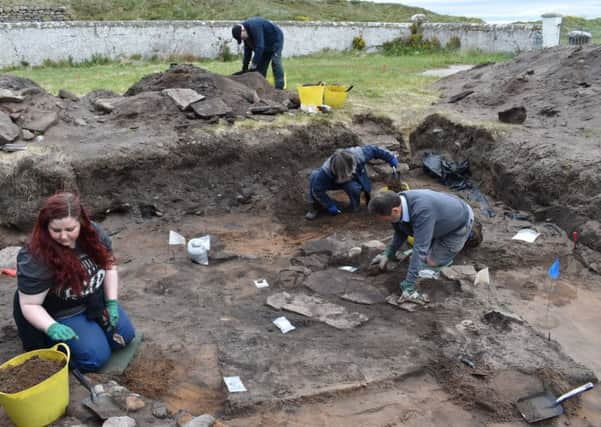1,100-year-old coin found in royal Pictish power centre


The coin was found along with the remains of a longhouse at Burghead Fort near Lossiemouth, which was thought to have been largely destroyed by the development of a new town during the 19th century.
Now archaeologists from Aberdeen University hope further significant findings will be revealed at the site – a probable seat of power of Northern Pictland between 500AD and 1000AD, given the fresh discoveries.
Advertisement
Hide AdAdvertisement
Hide AdDr Gordon Noble, senior lecturer at the University of Aberdeen, said: “The assumption has always been that there was nothing left at Burghead; that it was all trashed in the 19th century, but nobody’s really looked at the interior to see if there’s anything that survives inside the fort.
“But beneath the 19th century debris, we have started to find significant Pictish remains.”
The Alfred the Great coin was found within the floor layers of the building. Dating to the late ninth century, it is from the final era of the fort’s use and dates to a time when Viking raiders and settlers were leading to major changes within Pictish society.
Dr Noble added: “The coin is also interesting as it shows that the fort occupants were able to tap into long-distance trade networks.
“The coin is also pierced, perhaps for wearing; it shows that the occupants of the fort in this non-monetary economy literally wore their wealth.”
Dr Noble said the discovery of the Pictish longhouse helped to further understand the nature of the settlements within Burghead. He added: “Very little is known about Pictish architecture so this finding could provide vital clues as to the character of Pictish domestic architecture and the nature of activity at major forts such as Burghead.”
The Aberdeen University team has been working at Burghead on and off since 2015.
Advertisement
Hide AdAdvertisement
Hide Ad“Overall these findings suggest that there is still valuable information that can be recovered from Burghead which would tell us more about this society at a significant time for northern Scotland – just as Norse settlers were consolidating their power in Shetland and Orkney and launching attacks on mainland Scotland.”
Bruce Mann, archaeologist for Aberdeenshire Council Archaeology Service, which has supported the dig alongside Burghead Headland Trust, said: “The fact that we have surviving buildings and floor levels from this date is just incredible, and the universities’ work is shedding light on what is too often mistakenly called the ‘Dark Ages’.”